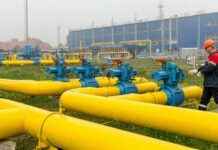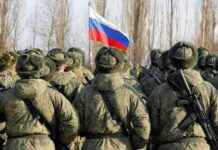Ukraine’s Covert Resurgence in Missile Industry Sparks Concern Amid Aid Uncertainty
In an exclusive report by The Economist, Ukraine’s clandestine efforts to revive its missile industry have come to light, raising alarms amidst ongoing aid uncertainty. The once-pioneering nation in space and rocket technology during the Soviet era is now shrouded in secrecy as it embarks on multiple missile projects, from state-backed initiatives to private ventures.
Historical Context: Rise, Fall, and Resurgence
At the height of its prowess, Ukraine’s Dnipro-based Pivdenmash plant stood at the forefront of strategic missile production, crafting four generations of cutting-edge missiles. However, the Budapest Memorandum of 1994 marked a turning point, compelling Ukraine to relinquish its nuclear-armed intercontinental ballistic missiles (ICBMs). Subsequent attempts to rejuvenate the industry were thwarted by corruption, insufficient government funding, Russian interference, and wavering political resolve.
Now, Vice Prime Minister Mykhailo Fedorov foresees a pivotal year ahead, declaring 2025 as the dawn of the Ukrainian cruise missile. President Volodymyr Zelenskyy has set an ambitious target of manufacturing 3,000 missiles by the end of 2025, signaling a bold resurgence in Ukraine’s defense capabilities.
Challenges and Triumphs Amidst Adversity
Despite these aspirations, Ukraine’s missile program faces formidable obstacles. Recent attacks by Russian forces on key production sites, such as the strikes on Neptune missile production in Kyiv and Pivdenmash in Dnipro, have highlighted the perilous nature of this endeavor. The casualties incurred during these assaults serve as stark reminders of the risks involved in rebuilding Ukraine’s missile industry.
To safeguard their operations, Ukrainian authorities have resorted to clandestine measures, moving production underground and dispersing component manufacturing across numerous covert sites. Volodymyr Horbulin, a stalwart in Ukraine’s missile industry, remains resolute in the face of adversity, asserting their unwavering commitment to the missile program.
International Collaborations and Future Prospects
As Ukraine navigates financial constraints and technological challenges, Western partnerships emerge as beacons of hope. Nations like Denmark and Britain have extended their support, offering a lifeline to Ukraine’s missile ambitions. However, the road ahead is fraught with uncertainty, as changes in Western aid policies post the upcoming US presidential inauguration could significantly impact the program’s trajectory.
Among the promising developments is the Trembita cruise missile, a cost-effective innovation that symbolizes Ukraine’s resourcefulness and resilience. With a dedicated team of volunteer engineers at the helm, Ukraine’s missile program is poised to redefine the country’s defense landscape.
In conclusion, Ukraine’s covert revival of its missile industry stands as a testament to its enduring spirit in the face of adversity. As the nation forges ahead with its ambitious missile projects, the world watches with bated breath, eager to witness the next chapter in Ukraine’s storied history of innovation and resilience.

















